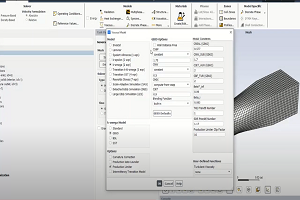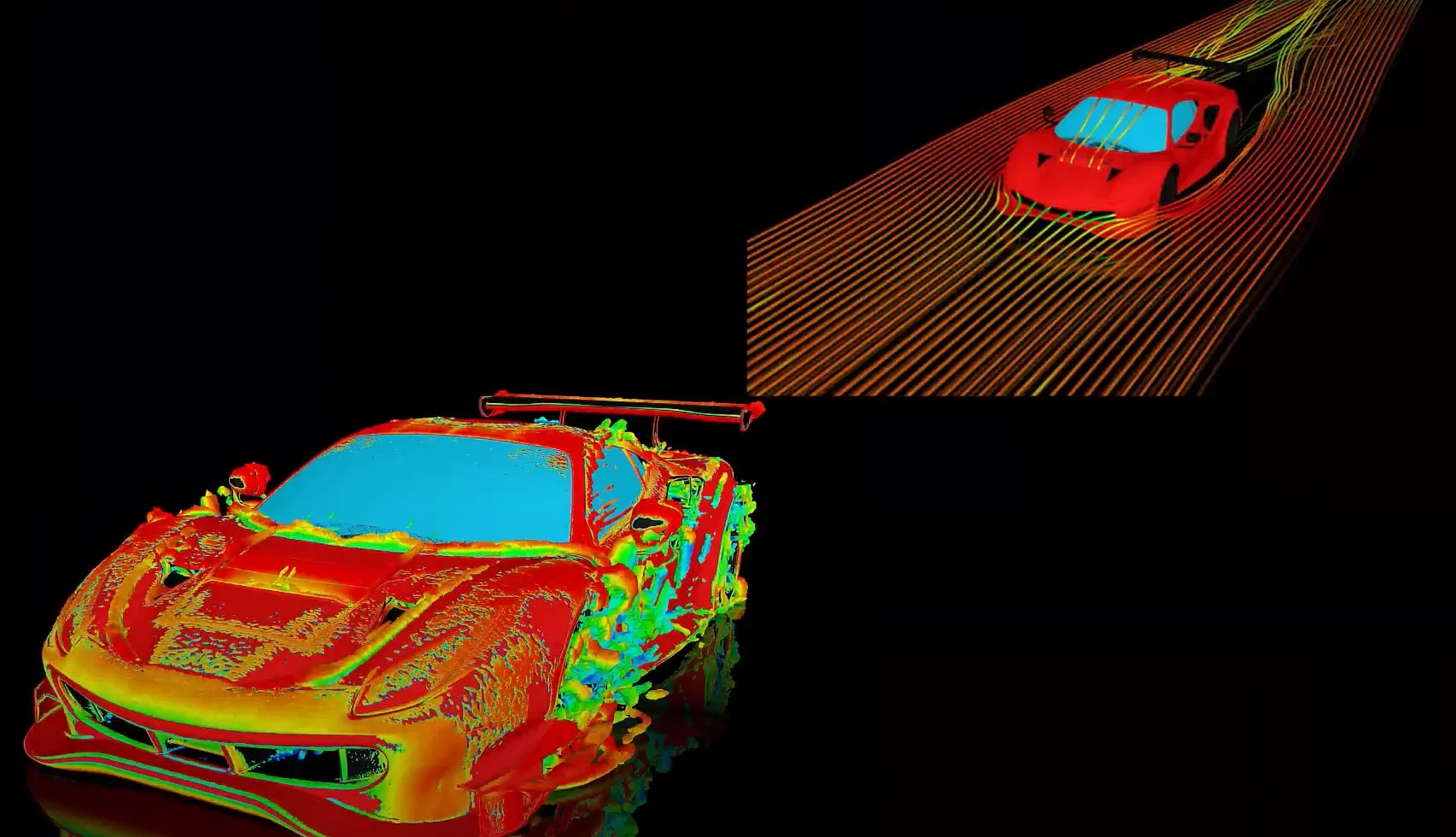What causes a warning about unprocessed component while post-processing a cyclic symmetry solution in Mechanical APDL?
Tagged: apdl, unprocessed component
-
-
June 6, 2022 at 9:57 am
 FAQParticipant
FAQParticipantAfter /CYCEXPAND,,OFF (or if no /CYCEXPAND has been issued), the following warning message is issued (may be PRNSOL, PRESOL or other):
*** WARNING ***
PRNSOL is listing an unprocessed component of a cyclic symmetry
solution. It can combine all appropriate components to produce the
actual nodal solution for sectors 1 through 6 if cyclic expansion
(/CYCEXPAND) and PowerGraphics (/GRAPH) are both active.Various commands (*GET, *VGET, …) gives you the unprocessed results but not as real and imaginary part but as real values for original and duplicate sector, so if you have n nodes in the sector, you need to get results for both nodes ii and ii+n
NODE UZ
24 83.275
120 190.35To compute expanded results, User need eq.3-2 (Mechanical APDL > Cyclic Symmetry Analysis Guide >Cyclic Symmetry Overview > Postprocessing a Cyclic Symmetry > Using the /CYCEXPAND Command)
The amplitude can be retrieve from the unprocessed results AMP = SQRT(UA^2+UB^2). A phase sweep can also be performed (as with CYCPHASE command) by adding a Cyclic Phase angle to both cos and sin terms in eq.3-2.
Extra precaution has to be observed when dealing with non-component results (USUM, SEQV, SINT) or linearized stress, component results need to be obtained with eq.3-2 before computing non-component results: combining non-component results with eq.3-2 for basic and duplicated sector is not correct.In addition, and for modal results only, expanded results are normalized with respect to the full mass matrix (N * [M]), while unprocessed results are normalized to the cyclic mass matrix (2 * [M], except if k = 0 or N/2, where 1 * [M]) (N = number of sectors, [M] = mass matrix of the original sector), so that we have to multiply the above results by SQRT(2/N) (or SQRT(1/N) if k = 0 or N/2).
With /CYCEPAND,,ON or within Workbench Mechanical, expanded results can be plotted (Maximum Over Cyclic Phase, Cyclic Phase of Maximum, Cyclic Phase)
-


Introducing Ansys Electronics Desktop on Ansys Cloud
The Watch & Learn video article provides an overview of cloud computing from Electronics Desktop and details the product licenses and subscriptions to ANSYS Cloud Service that are...

How to Create a Reflector for a Center High-Mounted Stop Lamp (CHMSL)
This video article demonstrates how to create a reflector for a center high-mounted stop lamp. Optical Part design in Ansys SPEOS enables the design and validation of multiple...

Introducing the GEKO Turbulence Model in Ansys Fluent
The GEKO (GEneralized K-Omega) turbulence model offers a flexible, robust, general-purpose approach to RANS turbulence modeling. Introducing 2 videos: Part 1 provides background information on the model and a...

Postprocessing on Ansys EnSight
This video demonstrates exporting data from Fluent in EnSight Case Gold format, and it reviews the basic postprocessing capabilities of EnSight.

- How do I request ANSYS Mechanical to use more number of cores for solution?
- How to restore the corrupted project in ANSYS Workbench?
- How to deal with “”Problem terminated — energy error too large””?”
- Contact Definitions in ANSYS Workbench Mechanical
- There is a unit systems mismatch between the environments involved in the solution.
- How can I change the background color, font size settings of the avi animation exported from Mechanical? How can I improve the resolution of the video?
- How to transfer a material model(s) from one Analysis system to another within Workbench?
- How to obtain force reaction in a section ?
- How to change color for each body in Mechanical?
- How to resolve “Error: Invalid Geometry”?

© 2025 Copyright ANSYS, Inc. All rights reserved.

